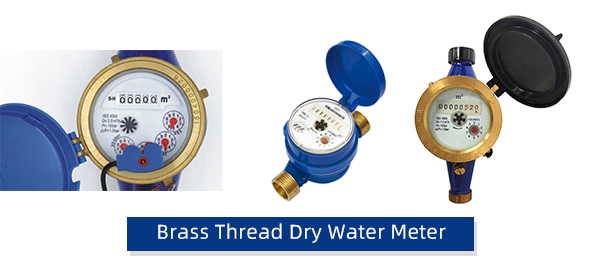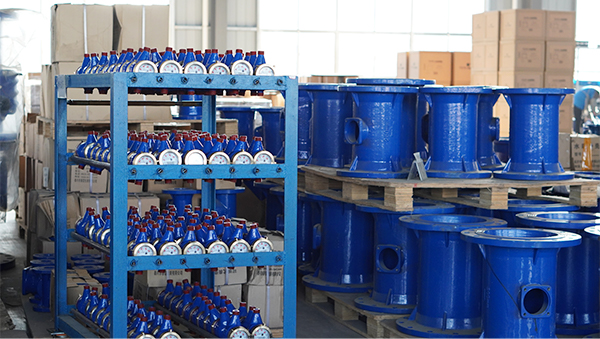- Gate valve
-
- DN1000 Extension stem double flange soft seal gate valveDIN F4 resilient seated gate valveDN450-1200 Resilient Seated Gate ValveDIN F5 resilient seated gate valveSocket connection soft seal gate valveUnderground cap soft seal gate valveBS5163 rising stem soft seal gate valveHard seal gate valveAPI slab Gate ValveStainless steel flange gate valveWafer knife gate valvePneumatic gate valveSoft seal gate valveExtension stem gate valveUL/FM fire protection groove ends gate valveRising stem forged steel gate valvecarbon steel gate valveStainless steel threaded gate valveDIN soft seal gate valveANSI soft sealing gate valve 200PSICast iron gate valveBS resilient seated gate valve
- Butterfly valve
-
- DN900 pneumatic triple eccentric hard seal butterfly valveD643H Triple Eccentric Butterfly ValveD343H Hard seal butterfly valveMulti standard EPDM seated butterfly valveSingle flange butterfly valveDN2000 Double eccentric butterfly valveFlange butterfly valveLug butterfly valveWafer butterfly valve with handleWorm gear operated butterfly valveWafer lined fluorine butterfly valveStainless steel wafer butterfly valveStainless steel flanged butterfly valveThree eccentric flange butterfly valvePneumatic flanged butterfly valvePneumatic wafer butterfly valveTriple eccentric butterfly valve wafer typeWafer butterfly valve ULC approvedInflatable seat butterfly valveHigh performance butterfly valveGrooved end butterfly valveElectric soft seal butterfly valveFlange fluorine lined butterfly valveHandle aluminum butterfly valveWorm Gear Aluminum Butterfly ValveFull PTFE lined butterfly valve wafer typeOne stem no-pin wafer butterfly valveMulti standard aluminum stem butterfly valveStainless Steel wafer Butterfly ValveAluminium handle operated lug butterfly valveLever Operated Flange Butterfly ValveButterfly valve stemButterfly valve discButterfly valve seat
- Ball valve
-
- DN1400 top-mounted eccentric semi-ball valveFlanged three-way ball valveFully welded ball valveNatural gas ball valveHigh platform flange ball valve1 PC ball valveFixed ball valvePTFE seat flanged ball valveMetal seat ball valveAPI 6D ball valve3 Piece ball valveFull Bore 3 way ball valve L-Port3 Way T-Port ball valve2PC Ball valve female thread stainless steel
- Globe Valve
-
- API Carbon Steel Globe ValveBellows Globe ValveStainless steel flange globe valveStainless steel thread S type globe valveStainless steel thread B type globe valveCast Steel Globe ValvePiston Globe ValveWCB Carbon Steel Globe Check Valveelectric motorized control stainless steel SS316 globe valveBrass Globe ValveCryogenic Globe valveHT200 Globe ValveThreaded Stainless Steel Globe ValveGG25 Globe ValveANSI API Cast Steel And Stainless Steel Globe valve
- Check valve
-
- Rubber seal check valveDN800 Slow closing check valveDN800 Rubber Disc Check ValveButterfly Buffering Check Valvecheck valve with counter weightSilent Check ValveWCB Swing check valveSwing Check ValveSingle Chip Check Valve H74WStainless Steel Wafer Check ValveSwing Start Check ValveFoot check valveAPI Swing Check ValveDIN Flange check valveSingle plate check valveLifting Check ValveBottom ValveHammer Diminish Noises Check ValveWafer Check ValveWafer dual plate check valve
- Control valve
-
- Static Balancing ValveCage Guided Sleeve Globe Control ValveDN1000 Piston Flow Regulating ValveDN1600 Electric Actuator Flow Regulating ValvePneumatic Flanged Butterfly ValvePneumatic Wafer Butterfly ValveAngle Seat ValvePneumatic gate valveElectric three-way control valveElectric sleeve control valve
- Water Meter
-
- Vertical Type Water MetersStainless steel threaded water meterPiston water meterPlastic water meterMore flow rotor dry water meterspiral vane flange water meterCI wotlman water meter with pulse outputLXCLG(R) Vertical removable element woltman cold (hot) water meterSingle flow rotor dry water meterPrepaid Token Water MeterElectromagnetic flowmeterRotary Piston Liquid Sealed Water MeterRotary Piston Liquid Sealed Water Meter
- Air valve
-
- Double ball exhaust valveDoubleair Air Valve SaudiDoubleair Air Valve Southeast AsiaDoubleair Air Valve South AmericaDouble Air ValveThreaded Air ValveSingle Air ValveTriple Functions Air ValveAutomatic Air Release ValveAutomatic release valveAutomatic exhaust valveComposite Exhaust Air ValveBrass exhaust valveDouble Ball Air Valve
- Pipe Repair & Coupling
-
- Flexible Multi-Function Pipe Coupling ZFJ-SSS Semi-Circle Pipe Repair Clamp SJW-HDuctile Iron Band Repair ClampStainless Steel Band Repair ClampDouble-Section Pipe Repair CouplingFolding Type Pipe RepairSingle-Section Multi-Function Pipe Coupling MF-SGear-Ring Type Multi-Function Pipe Coupling GR-SZBW Damping Corrugated Hose
- Dismantling Joint
-
- VSSJAFC(CC2F) Detachable Flange Transmission JointVSSJA-2(B2F) Double Flange Limited Expansion JointVSSJA-1(BF) Single Flange Limited Expansion JointVSSJA(AF) Flange Loose Expansion JointJGD-B Threaded Rubber JointZBW Damping Corrugated HoseKXT-S Flexible Dual-Spherical Rubber JointKXT Rubber Soft JointFlange Adaptor
The advantages and disadvantages of dry and wet water meters
Definition of the wet water meter:
Wet water meter: water meter with the counter immersed in water, its table glass bears water pressure, the transmission of the sensor and the counter is gear linkage, the quality of water after using a period of time will affect the clarity of the water meter reading, the interior design should give priority to the wet water meter.
Wet water meter features:
The water meter with the counter immersed in water, the table glass bears the water pressure, the transmission of the sensor and the counter is gear linkage, and the good or bad water quality after a period of time will affect the clarity of the water meter reading.
Definition of the dry water meter:
Dry water meter: water meter in which the counter is not immersed in water, the structure of the sensor and the chamber of the counter are isolated, the glass of the water meter is not subjected to water pressure, the transmission of the sensor and the counter is generally driven by a magnet.
1, dry water meter magnetic components
Dry water meter magnetic materials commonly used are ferrite and neodymium iron boron, the structure of magnetic components generally have the shape of ring magnets, columnar magnets, and ring magnets and "gate" shaped silicon steel sheet.
2, the dry water meter counting mechanism is dependent on the gearbox and the measured water isolation, so the gearbox bottom and around must be able to withstand the force of the 2MPa pressure test without deformation. To this end, in the design of a dry water meter, in addition to the gearbox on the bottom of more than a dozen additional reinforcement bars, often in the gearbox on the bottom and the inner wall lined with metal bowl lining to prevent its deformation under pressure. There is a shaft hole at the center of the upper and lower bottom of the gearbox, which is compatible with the central gear shaft and impeller shaft respectively. In order to minimize the frictional resistance of the moving parts and improve the initial flow value, there is generally a concave (or flat) jewel bearing set at the bottom of the upper shaft hole. Dry water meter counting mechanism, in addition to relying on the gearbox around and at the bottom of which the measured water is isolated, it is best to take good sealing measures in the upper part of the gearbox to prevent the inflow of sewage outside the table to erode the counting mechanism.
The advantages and disadvantages of the dry water meter and wet water meter:
① The biggest difference between the dry water meter and the wet water meter is the measuring mechanism.
Its impeller is separated from the central gear, and the upper end of the impeller is coupled by a magnetic element (magnetic ring or columnar magnet) with the magnetic element at the lower end of the central gear. When the water flow pushes the impeller to rotate, the magnetic element at the upper end of the impeller and the magnetic element at the lower end of the center gear absorb or repel each other, driving the center gear to rotate synchronously, and the water flow through the meter is recorded by the center drive counter.
②In terms of measurement accuracy, there is no difference between dry water meters and wet water meters. Even if there is a difference, it is insignificant.
③After using the wet water meter for a period of time (especially in areas with poor water quality), the dial will easily turn yellow and black, affecting the reading; if the surface glass of the water meter is broken, water will overflow; when the temperature difference between inside and outside the meter is large, the glass surface will easily produce fog and water droplets, affecting the reading; when the weather is cold, the water in the glass on the surface of the water meter will freeze (sometimes the glass will freeze), thus making the water meter unable to work and even damaging water meter.
④ In different use environments, the correct choice of different water meters. For example, areas with softer water quality are more suitable for wet water meters, which are not easily scaled. In areas with harder water quality, as the water is easy to scale, the dry water meter will not affect the reading because the count is isolated from the measured water. Dry type water meter is obviously higher than wet type water meter.
⑤ Dry type water meter is a water meter in which the counter is not immersed in water, technically the sensor is isolated from the chamber of the counter, and the glass of the water meter is not subjected to water pressure. The dry water meter is not affected by the suspended impurities in water because its counting mechanism is isolated from the measured water, which ensures the normal work of the counting mechanism and the clarity of the readings; at the same time, it will not affect the reading of the water meter like the wet water meter because of the temperature difference between the inside and outside of the meter and the fogging or condensation of water droplets under the glass; even if the glass is broken accidentally in the process of use, the water will not overflow and the safety is good.
The error adjustment device of rotary multi-stream dry water meter is generally of external adjustment type, and its external size and internal structure are basically similar to the wet water meter of the same specification, and many parts can be common to each other.
(7) But the dry water meter is relatively complex in structure, so it requires higher production technology and assembly process for the manufacturer, so its cost is also slightly higher than the wet water meter.









